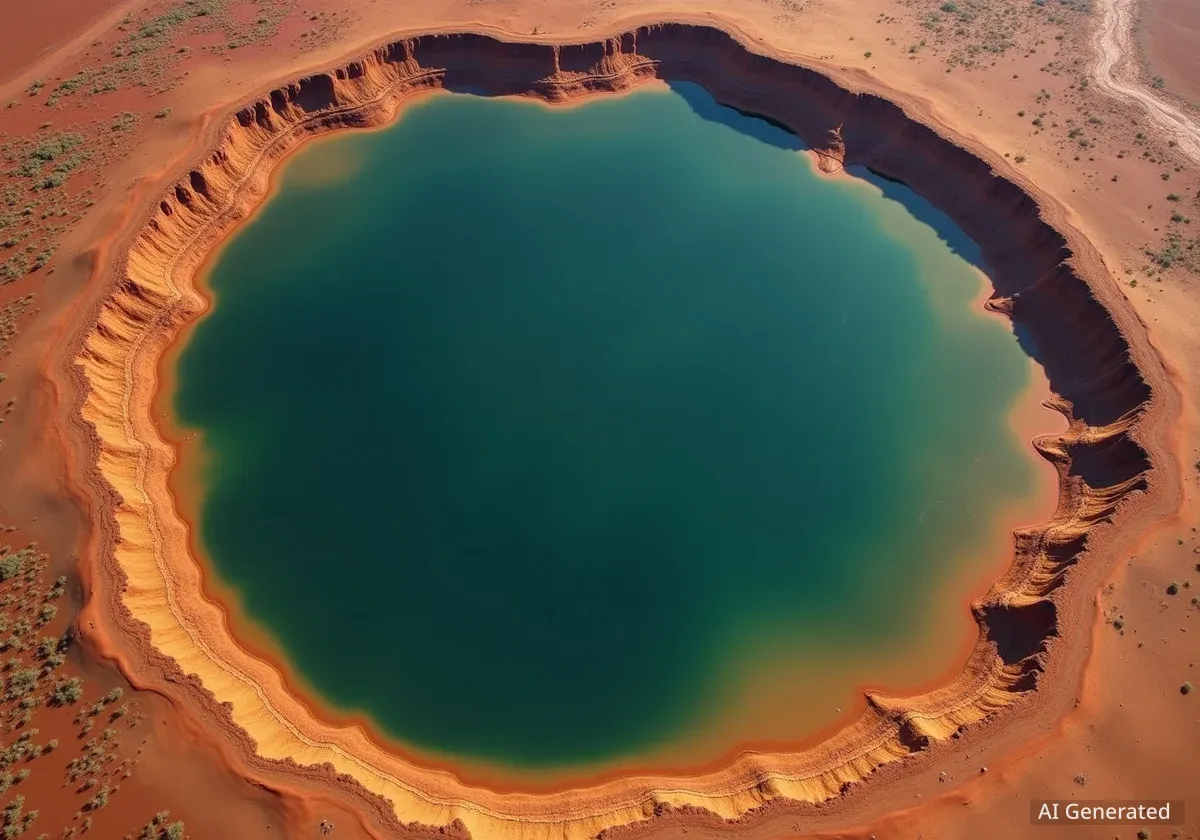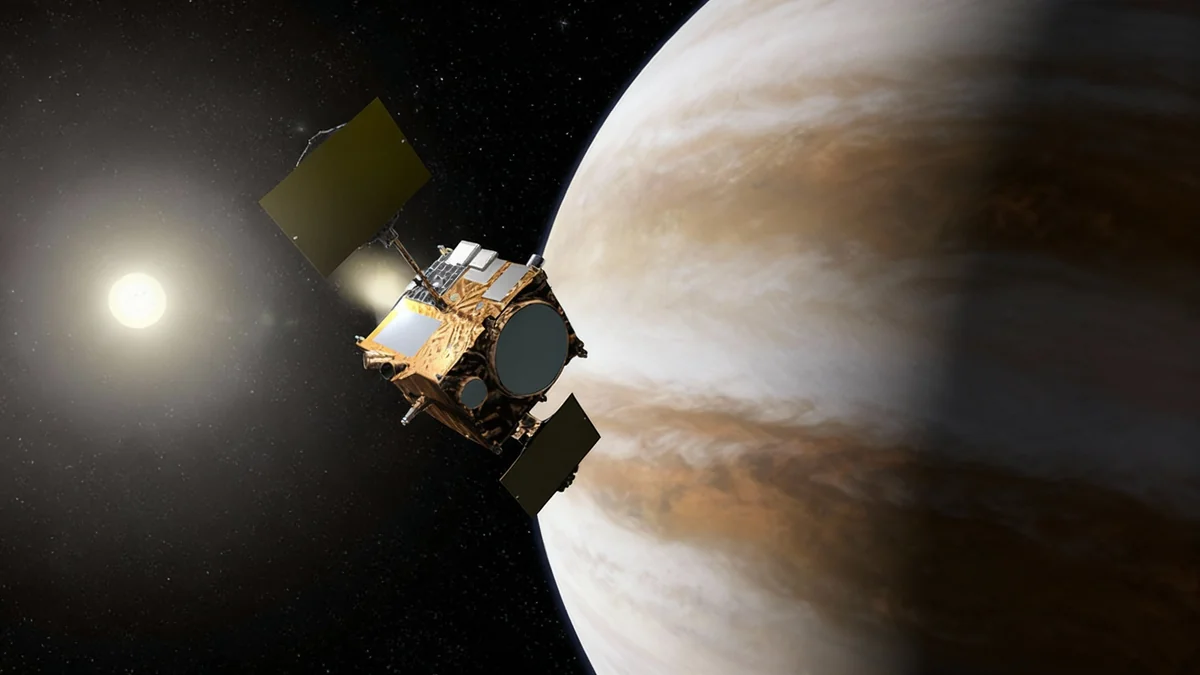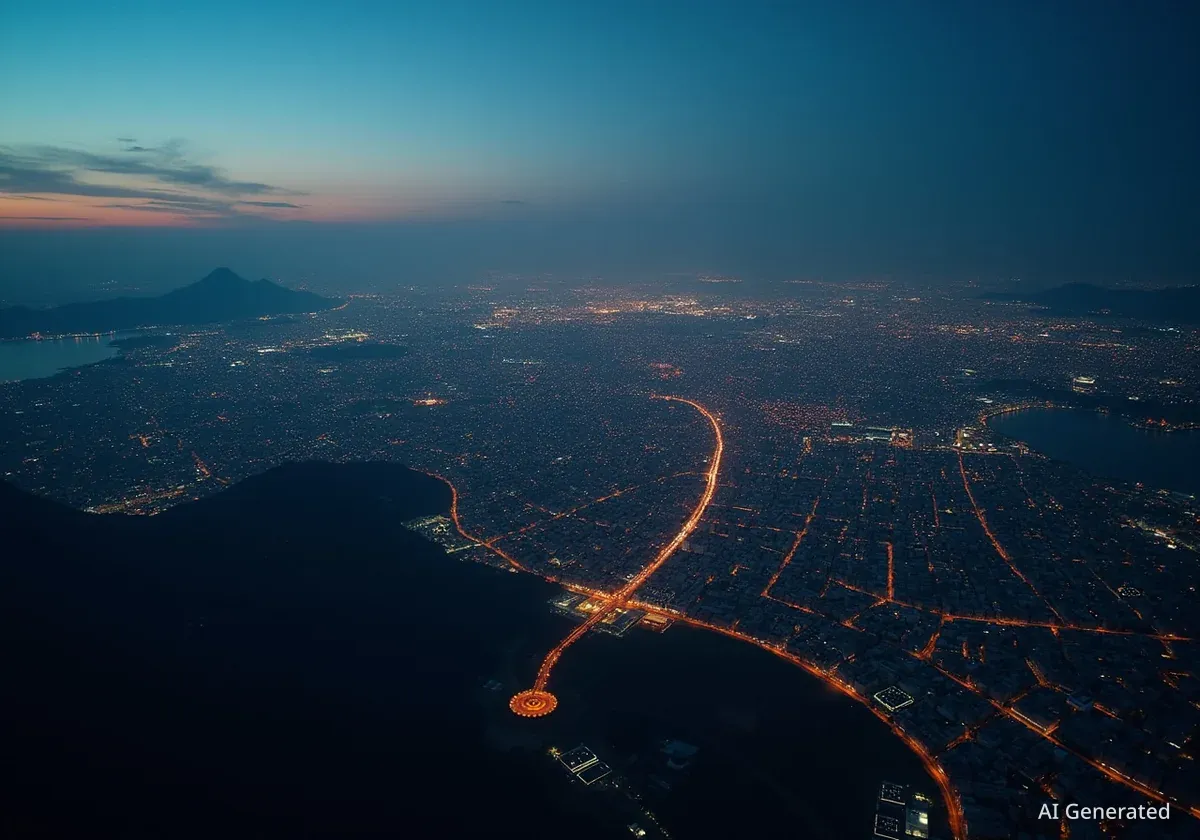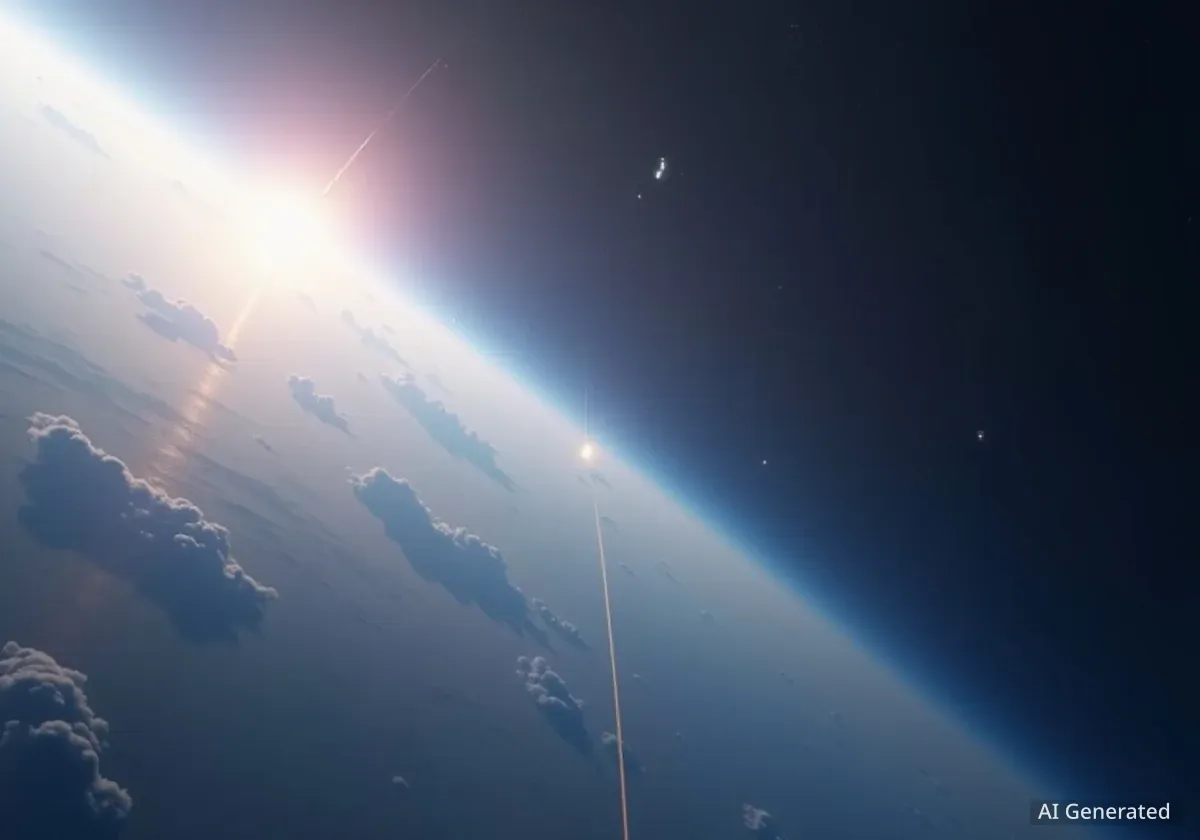A satellite orbiting hundreds of kilometers above Earth has captured a striking image from the Australian outback: a vast, water-filled lake shaped like a ghostly face. The phenomenon appeared in Western Australia's remote Gibson Desert after unusually heavy rainfall filled the basin of Lake Carnegie, an otherwise dry and desolate landscape.
The European Space Agency's Copernicus Sentinel-2 satellite documented the transformation, revealing intricate details of the temporary lake. The image provides a rare glimpse into the dramatic environmental cycles that shape one of Earth's driest continents.
Key Takeaways
- Unusually heavy rainfall filled Lake Carnegie, a large ephemeral lake in Western Australia.
- The Copernicus Sentinel-2 satellite captured images of the water-filled lake, which resembles a ghostly face from orbit.
- The lake, typically a muddy marsh, expands to approximately 5,700 square kilometers when full.
- This temporary body of water becomes a vital habitat for birdlife, including the critically endangered night parrot.
- The area is protected as part of the Matuwa Kurrara Kurrara National Park.
A Fleeting Spectacle from Orbit
In a remote corner of Western Australia, approximately 900 kilometers northeast of Perth, a remarkable natural event has unfolded. Lake Carnegie, a feature that for most of the year is little more than a muddy salt marsh, has been completely transformed by significant precipitation.
The recent deluge filled the vast basin, creating one of Australia’s largest lakes. From space, the newly formed body of water has taken on an eerie appearance. The outlines of the lake, combined with its islands and inlets, form a shape that strikingly resembles a human face with hollowed eyes and an open mouth.
These images were captured by the multispectral imager aboard the Copernicus Sentinel-2, a satellite mission developed by the European Space Agency (ESA) to monitor our planet's changing landscapes. The satellite provides high-resolution imagery that helps scientists track environmental shifts, agricultural health, and natural disasters.
What is an Ephemeral Lake?
Ephemeral lakes, also known as playa lakes, are temporary bodies of water that only exist for short periods. They form in arid or semi-arid regions and are entirely dependent on rainfall. When rains are heavy, they can fill rapidly, but during dry seasons, the water evaporates, often leaving behind a flat bed of clay, silt, and salt.
The Technology Behind the Image
The Copernicus Sentinel-2 satellite captured the scene using different spectral bands, which allows for various ways of viewing the landscape. One image shows Lake Carnegie in natural colors, appearing as it would to the human eye from space—a muddy, greenish-brown expanse.
However, a second image processed in false-color provides a much more dramatic and scientifically useful view. In this version, a specific combination of spectral bands makes water appear in a deep, vibrant blue. This technique makes the lake's outline incredibly distinct against the surrounding desert terrain.
"Using false-color composites allows us to clearly distinguish water from land. This is crucial for monitoring inundation patterns, assessing flood damage, and understanding how these temporary ecosystems function."
The false-color image highlights the intricate network of swamps and channels at the southeastern end of the lake. These features are barely visible in the natural-color photo but are clearly defined in the processed version, demonstrating the power of multispectral imaging in environmental science.
Lake Carnegie at a Glance
- Location: Shire of Wiluna, Western Australia
- Area When Full: Approximately 5,700 square kilometers
- Type: Ephemeral (temporary) lake
- Primary Water Source: Infrequent, heavy rainfall
- Typical State: Dry salt marsh
A Sudden Oasis for Wildlife
While the region around Lake Carnegie is sparsely populated by humans, with only about a dozen permanent residents, the sudden appearance of water creates a vital, temporary habitat for wildlife. The lake becomes a critical breeding ground for large flocks of birds that are drawn to the short-lived abundance of water and food.
This isolated oasis is particularly significant for one of Australia’s most mysterious and endangered birds: the night parrot. This elusive, nocturnal bird was thought to be extinct for nearly a century until it was rediscovered. The area around Lake Carnegie is believed to be one of its few remaining habitats.
The protection of this unique environment is a priority. The entire area is part of the Matuwa Kurrara Kurrara National Park and the Lake Carnegie nature reserve. These designations aim to safeguard the region's important biodiversity and its deep Aboriginal cultural heritage.
Satellites as Global Guardians
The striking images of Lake Carnegie serve as a powerful reminder of how dynamic our planet is. They also showcase the essential role of space technology in monitoring Earth's health. Programs like Copernicus provide a continuous stream of data that is invaluable for scientists, conservationists, and policymakers.
By observing remote locations from orbit, researchers can:
- Track the effects of climate change on water resources.
- Monitor deforestation and land use changes.
- Provide early warnings for natural disasters like floods and wildfires.
- Assess the health of ecosystems and biodiversity hotspots.
The ghostly face of Lake Carnegie, while a fleeting and spooky spectacle, is more than just a curiosity. It is a data point in the ongoing story of our planet's cycles—a story that satellites are helping us understand better every day.





